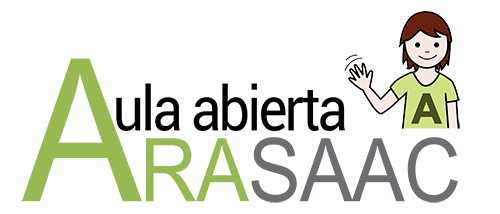 This work is licensed under a Creative Commons Attribution-NonComercial-ShareAlike 4.0 International license.
This work is licensed under a Creative Commons Attribution-NonComercial-ShareAlike 4.0 International license.
Before starting this tutorial on subtitling or adapting texts with pictograms,we would like to clarify several topics:
- When we subtitle a text with pictograms, the intention is not that the user acquires the reading with this type of adaptations, but to facilitate the understanding and accessibility to said texts. The learning of reading and writing follows a process that we must work following another type of methodology and using other types of materials and activities.
- The adaptation with pictograms must be carried out taking into account the cognitive capacity of the person to whom it is addressed, their learning style,their motivation,…, among other aspects. Therefore, the need to use pictograms that represent prepositions, determinants, pronouns, etc., should be agreed in the decision-making of the multidisciplinary intervention team,which intervenes with the user, in collaboration with the family,
- There is no manual of style or a decalogue that tells us in detail the guidelines to follow for the adaptation of a text with pictograms, but we must avoid the accumulation of pictograms to avoid “visual noise”.
- It is important to remember that the use of pictograms also requires learning,as if we were learning a new language.
- We can all make mistakes at the beginning, so our goal should not be criticism without more, but the facilitation of the method and the appropriate means so that this process is carried out in a way adjusted to the characteristics of the person with whom we are going to work.
Therefore, we propose a series of strategies and / or guidelines to try to minimize “visual noise” and improve the adaptation of any text or document in which we are going to introduce phrases with pictograms.
Of course, we accept all suggestions and collaborations that help us achieve this goal.
Before starting this type of adaptation, we should differentiate between the way of writing and the way of subtitling with pictograms.
 WRITING TEXTS IN EASY READING
WRITING TEXTS IN EASY READING
As for the Writing,it is obvious that the language we usually use is very complex, so one of the first tasks we will have to do will consist of “translate” the texts to easy reading, taking into account that this type of texts are not only aimed at people with autism and people with intellectual disabilities,but also people with language difficulties, people with low cultural training or migrants who do not know the language.
On this subject of easy reading, there are many articles and documents that teach us how to elaborate this type of documents and that recommend style and content standards for their proper adaptation at different levels, including the use of pictograms.
As far as our daily work is concerned, we have intersevered several style rules that seem fundamental to us for a good subtitling with pictograms:
- Thesimple and well-structured language with commonly used words. Not to be confused with children’s language.
- Statements in affirmative form,avoiding, if not strictly necessary, negative statements and the passive form.
- One idea per sentence.
- Use of pictograms or images as visual supports.
To deepen on this topic, we recommend reading these documents: “Easy reading: Methods of writing and evaluation” (Óscar García Muñoz), “Easy reading guide” (Discapnet) and “How to elaborate texts in easy reading”(Sid – USAL).
 SUBTITLING TEXTS WITH PICTOGRAMS
SUBTITLING TEXTS WITH PICTOGRAMS
When faced with subtitling, we must break some myths about the use of pictograms in communication, myths that have been scientifically proven to be just that, myths, and that can be harmful to the development of speech and language in people with difficulties in communicating.
Carmen Basil,one of the most influential professionals and experts in the world of Augmentative and Alternative Communication (AAC), dedicated to us on the page What areSAACs? the following paragraph that we suggest you read carefully: “Augmentative and Alternative Communication is not incompatible but complementary to the rehabilitation of natural speech, and can also help its success when possible. It should therefore not hesitate to introduce it at an early age, as soon as difficulties in the development of oral language are observed, or shortly after any accident or disease has caused its deterioration. There is no evidence that the use of AAC inhibits or interferes with speech development or recovery.“.
Taking into account the suggestions proposed in the section of easy reading and daily experience, we could generate some examples that help us minimize the “visual noise” in the subtitling of texts with pictograms.
In this example that we present below, we observe that the written phrase (at the top or bottom) should always accompany the subtitling with pictograms. In this way, we facilitate that the person who is going to use it with a user knows the meaning of the phrase that we are going to transmit.

In this case, we have placed each pictogram on top of the corresponding text, although, if the user presents a higher level of abstraction, we can center the pictograms on the text. We have also proceeded to eliminate pictograms that do not add meaning to the understanding of the phrase, as is the case with the article “the”.
The ultimate goal is to understand the meaning of the phrase or text we have adapted, in this case child + reading.
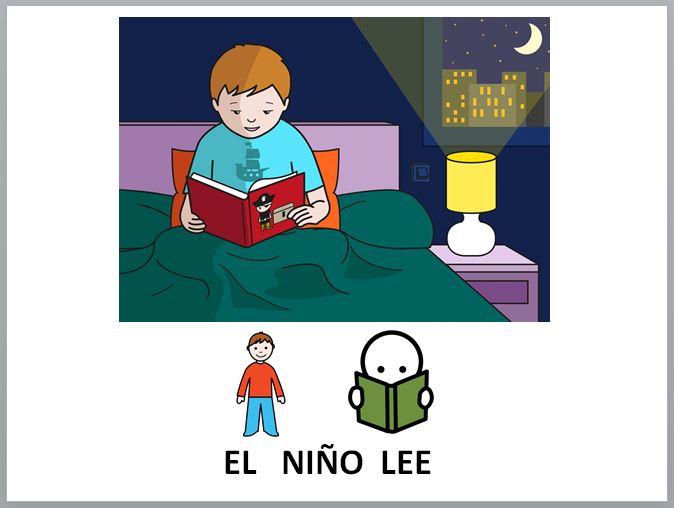
We continue with the example, expanding the content of our adapted phrase.
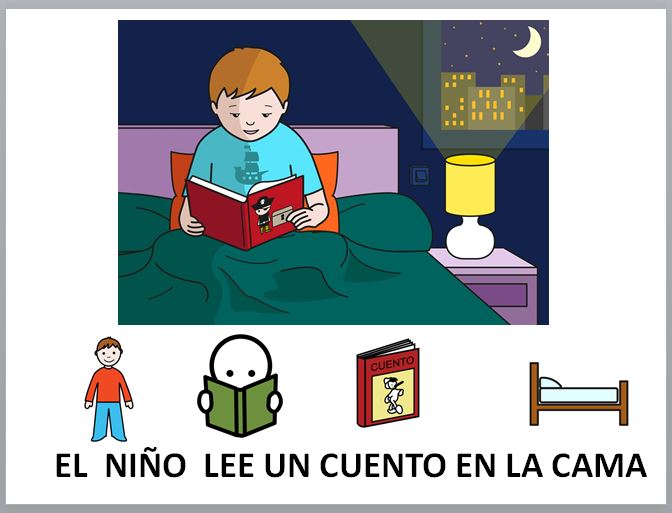
This would be a correct way to add a new word to our adaptation, but do not forget that, when we work this text with the user on the first occasions, we must accompany it with the auditory reinforcement: “the child reads a story in bed”.
We must not forget that great authors of the CAA, such as Gloria Soto,speaks of the importance of the “narrative discourse”,understanding that we must provide the same communication opportunities to people who have difficulties in this area. Therefore, the use of some words can provide greater meaning to the sentence and allow us to enhance a more structured morphosyntax in those cases in which users present a higher level of abstraction.

The same happens with some pictograms referring to demonstrative or possessive, which can provide a differentiating nuance in the phrase, which we can take advantage of to internalize an expressive level more in line with the common language.
Of course, in the ARASAACdatabase, there are pictograms for all types of words (determinant, nouns, verbs, adjectives, pronouns, etc.), since the professionals and families themselves have demanded it from us. Each person is free to make the adaptations they want, since they are the one who best knows the characteristics of the user and, therefore, we must respect their way of working.
Finally, we recommend that you do not saturate the document or presentation with too many sentences. Sometimes, one or two sentences with pictograms is enough, placing them one at the top and another at the bottom.
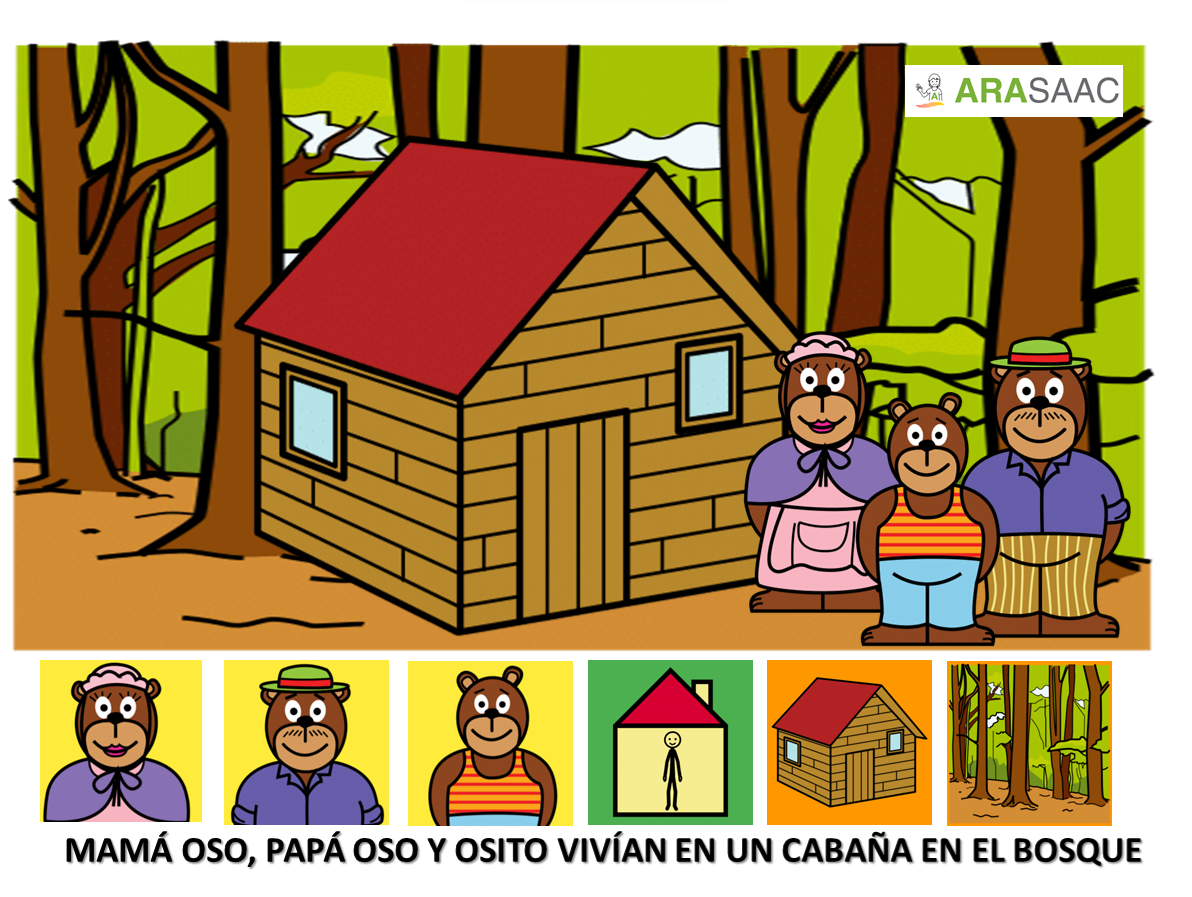
Some times, due to the format of the publication, we can use another form of subtitling in which we can include the pictograms in line with the text.
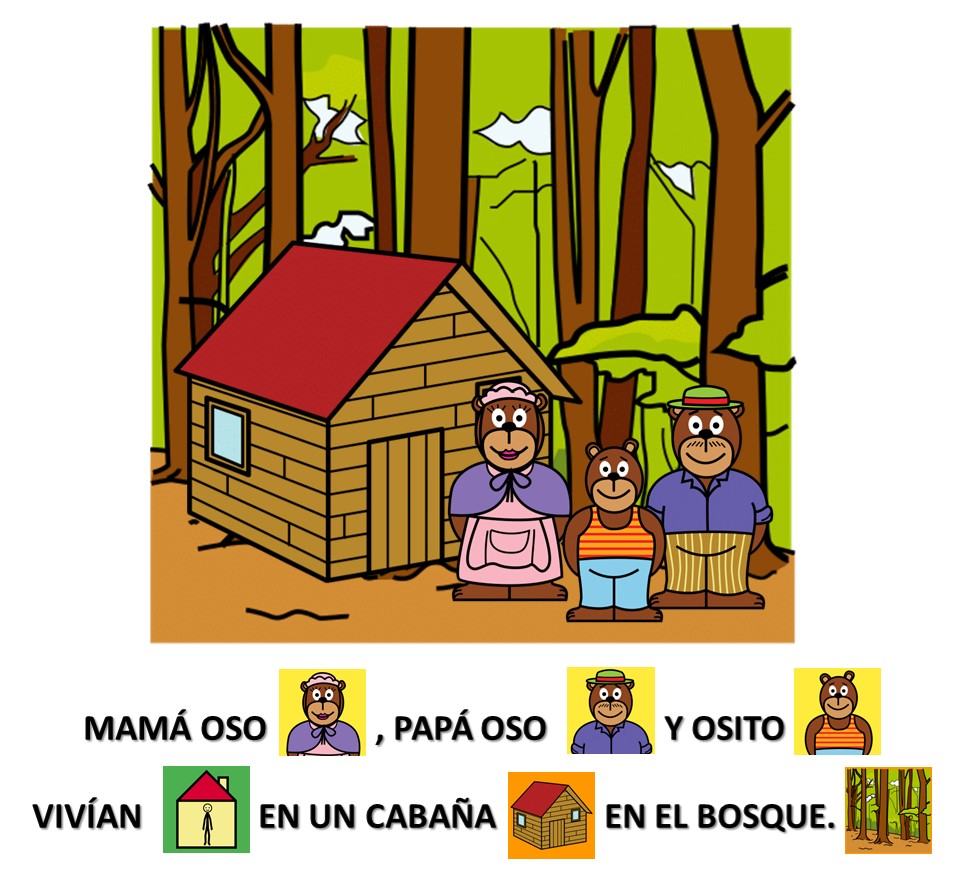
There may be other possibilities of subtitling, but the most important thing is to remember the premises that we have mentioned above and to insist again that when we subtitle a text with pictograms, we do not intend for the user to acquire the reading, but rather to facilitate understanding and accessibility to these texts.
The images that appear in the screenshots have been extracted from theSoyvisual page.






